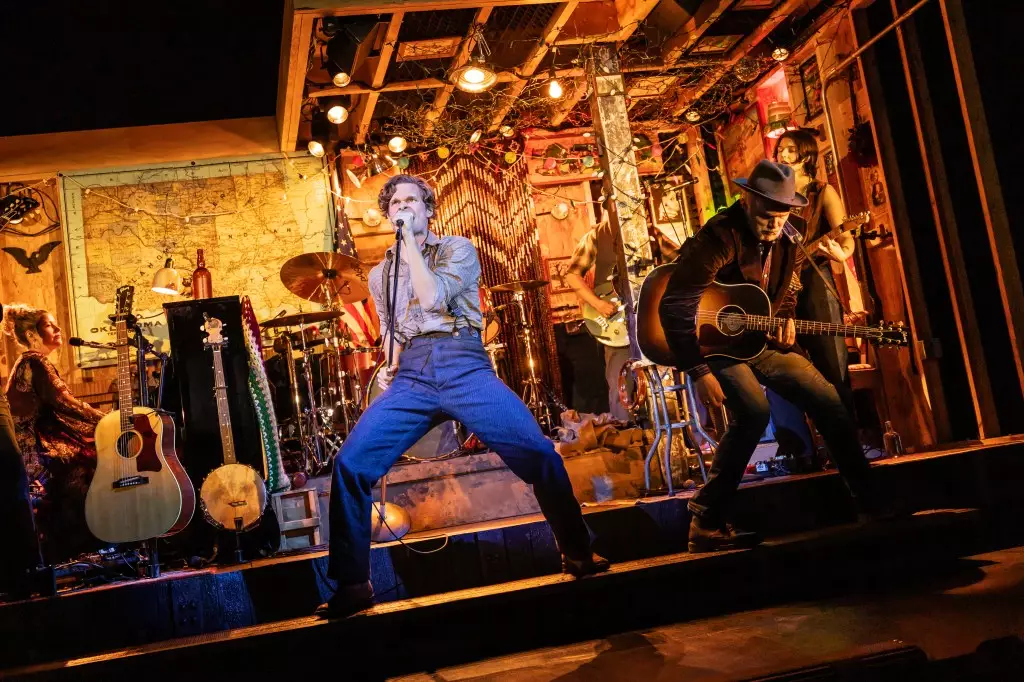As the Tony Awards approach, the Broadway landscape becomes a fascinating case study of how nominations — or the lack thereof — can influence box office performance. The latest figures reveal a mixed bag of performances where some productions thrive post-nomination while others seem to struggle. Analyzing this dynamic not only sheds light on the immediate financial implications but also reveals deeper insights into the prominence and marketing strategies within the theatre community.
In examining recent statistics from Broadway’s box office, we find that 14 productions reported declines after being in the running for nominations, while 10 saw an uptick in revenue. Among the most interesting trends was a surprising anomaly: “Redwood,” which received no nominations, managed to increase its gross by an impressive $191,581, yielding a total gross of $818,697, despite not even breaking the critical 85% attendance barrier. This striking performance prompts a broader discussion about publicity, star power, and the emotional attachment audiences have to shows, regardless of their critical acclaim.
Celebrating Success: The Standouts
On the other side of the spectrum, productions with substantial recognition such as “The Picture of Dorian Gray,” were undoubtedly bolstered by their nominations. This production, featuring the standout Sarah Snook, saw a significant increase of $120,388, echoing the notion that awards serve as a powerful marketing tool, attracting crowds eager to witness a “Tony-nominated” performance. It’s evident that nominations not only validate artistic merit but also serve as a beacon, drawing potential attendees who wish to experience celebrated works.
Similarly, “Good Night, And Good Luck” and “Sunset Blvd.” also reported marked increases in their box office receipts, underlining the importance of nominations as an endorsement. With five and seven nominations respectively, both shows benefited from heightened visibility, encouraging fans and newcomers alike to attend. This phenomenon points to a vital aspect of the Broadway experience: the desire to engage with works that are critically acknowledged.
The Dark Side of Awards Season: The Outliers
Yet, not all nominated shows are revelling in the limelight. Notable mentions include “Smash” and “Gypsy,” which experienced declines in their box office figures despite their nominations. These contrasting narratives prompt questions about the specificity of audience interests and the potential disconnect between critical acclaim and popular appeal. “Smash,” with its two nominations, plummeted by $47,647, suggesting that even recognition cannot assure financial success if the content doesn’t resonate with the audience.
“Gypsy,” despite its five nominations, also experienced a downturn. This raises an intriguing point about the specificity of audience demographics; perhaps the show, regardless of its accolades, struggles to capture a modern audience. It emphasizes the reality that awards can sometimes put a spotlight on productions that may not have a broad enough appeal, illustrating the complexities of audience engagement within the Broadway ecosystem.
A Closer Look: The Quirks of Theaters and Productions
As we analyze these numbers, it is essential to consider the nuances of the individual theaters as well. Productions at certain venues, like the Lyceum with “Oh, Mary!” or the Schoenfeld with “Buena Vista Social Club,” seem to invoke consistent audience turnout, often yielding sell-out performances. This leads us to speculate about the longstanding reputation of these venues and their inherent ability to draw crowds, independent of external nominations.
Moreover, the question arises: how much do ticket prices influence attendance figures? Productions with lower average ticket prices, such as “Real Women Have Curves,” reported less favorable outcomes, which suggests that pricing strategy plays a key role amidst the competitive Broadway landscape. The concept of accessibility — both in terms of price and geographical location of theaters — becomes crucial when we evaluate which productions succeed.
The Overall Broadway Picture: A Season of Growth
Despite the fluctuations in individual show performances, the overall Broadway box office presents a picture of resilience. With total grossing reported at $44,351,676 and 336,494 attendees in a single week, Broadway’s market remains robust. A 20% increase compared to last year highlights the sustained interest in live performances, indicating that even amidst competitive pressures, theatre in New York continues to thrive.
As the awards approach, the conversations around nominations, both celebratory and critical, will undoubtedly escalate. This time of year is not only a recognition of artistic achievement but also a critical juncture that can shape the narratives surrounding financial success and audience engagement for productions. The interplay between recognition and revenue serves as a compelling study of the theatre ecosystem — one that will continue to evolve alongside the tastes and preferences of its audiences.

